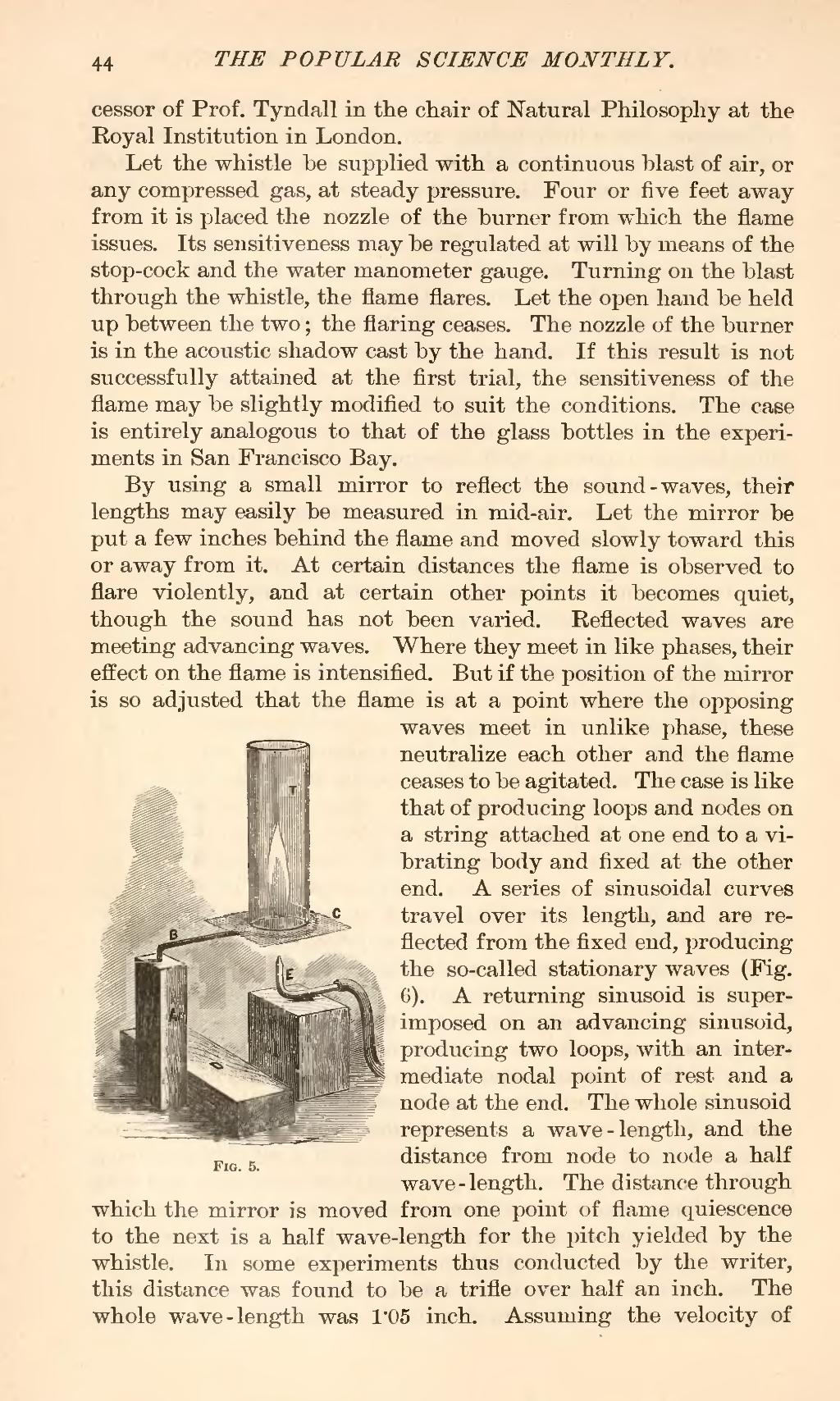cessor of Prof. Tyndall in the chair of Natural Philosophy at the Royal Institution in London.
Let the whistle be supplied with a continuous blast of air, or any compressed gas, at steady pressure. Four or five feet away from it is placed the nozzle of the burner from which the flame issues. Its sensitiveness may be regulated at will by means of the stop-cock and the water manometer gauge. Turning on the blast through the whistle, the flame flares. Let the open hand be held up between the two; the flaring ceases. The nozzle of the burner is in the acoustic shadow cast by the hand. If this result is not successfully attained at the first trial, the sensitiveness of the flame may be slightly modified to suit the conditions. The case is entirely analogous to that of the glass bottles in the experiments in San Francisco Bay.
By using a small mirror to reflect the sound-waves, their lengths may easily be measured in mid-air. Let the mirror be put a few inches behind the flame and moved slowly toward this or away from it. At certain distances the flame is observed to flare violently, and at certain other points it becomes quiet, though the sound has not been varied. Reflected waves are meeting advancing waves. Where they meet in like phases, their effect on the flame is intensified. But if the position of the mirror is so adjusted that the flame is at a point where the opposing  Fig. 5. waves meet in unlike phase, these neutralize each other and the flame ceases to be agitated. The case is like that of producing loops and nodes on a string attached at one end to a vibrating body and fixed at the other end. A series of sinusoidal curves travel over its length, and are reflected from the fixed end, producing the so-called stationary waves (Fig. 6). A returning sinusoid is super-imposed on an advancing sinusoid, producing two loops, with an intermediate nodal point of rest and a node at the end. The whole sinusoid represents a wave-length, and the distance from node to node a half wave-length. The distance through which the mirror is moved from one point of flame quiescence to the next is a half wave-length for the pitch yielded by the whistle. In some experiments thus conducted by the writer, this distance was found to be a trifle over half an inch. The whole wave-length was 1·05 inch. Assuming the velocity of
Fig. 5. waves meet in unlike phase, these neutralize each other and the flame ceases to be agitated. The case is like that of producing loops and nodes on a string attached at one end to a vibrating body and fixed at the other end. A series of sinusoidal curves travel over its length, and are reflected from the fixed end, producing the so-called stationary waves (Fig. 6). A returning sinusoid is super-imposed on an advancing sinusoid, producing two loops, with an intermediate nodal point of rest and a node at the end. The whole sinusoid represents a wave-length, and the distance from node to node a half wave-length. The distance through which the mirror is moved from one point of flame quiescence to the next is a half wave-length for the pitch yielded by the whistle. In some experiments thus conducted by the writer, this distance was found to be a trifle over half an inch. The whole wave-length was 1·05 inch. Assuming the velocity of

